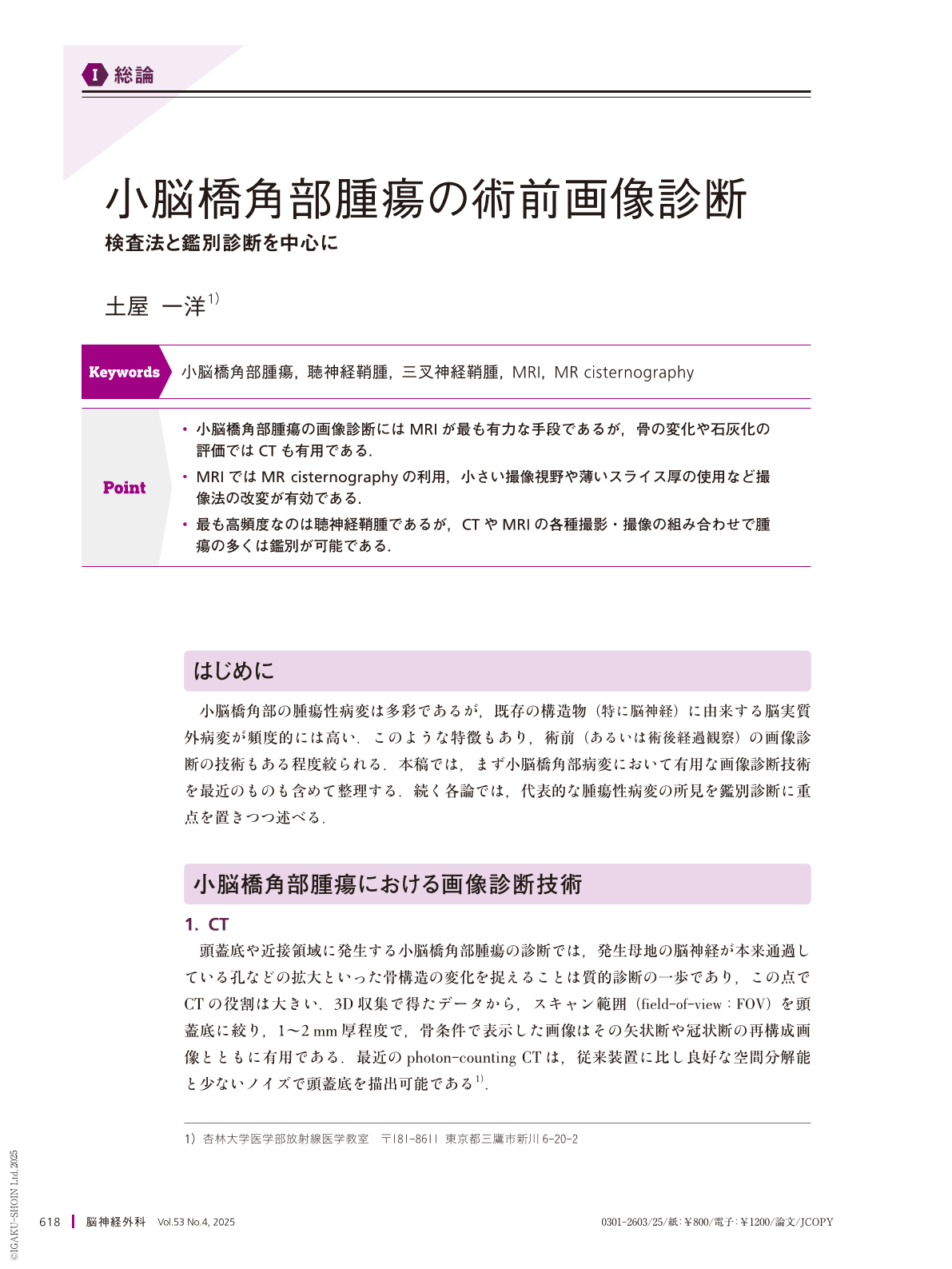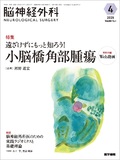Japanese
English
- 有料閲覧
- Abstract 文献概要
- 1ページ目 Look Inside
- 参考文献 Reference
Point
・小脳橋角部腫瘍の画像診断にはMRIが最も有力な手段であるが,骨の変化や石灰化の評価ではCTも有用である.
・MRIではMR cisternographyの利用,小さい撮像視野や薄いスライス厚の使用など撮像法の改変が有効である.
・最も高頻度なのは聴神経鞘腫であるが,CTやMRIの各種撮影・撮像の組み合わせで腫瘍の多くは鑑別が可能である.
MRI is the most effective imaging tool for diagnosing cerebellopontine angle tumors, although CT is also useful for evaluating bone changes and detecting calcification. Regarding MRI, it is recommended to efficiently use MR cisternography, a small imaging field of view, and a thin slice thickness. The most common tumor type is acoustic schwannoma, followed by meningioma, trigeminal, facial nerve, jugular foramen schwannoma, paraganglioma, and others. Many of these tumor types can be effectively differentiated by combining various CT and MRI techniques, as stated above, as well as MRA, perfusion imaging, MR digital subtraction angiography, MR spectroscopy, and bone imaging. This article discusses the key MRI and CT findings of major cerebellopontine angle tumors, as well as some representative cases and the corresponding differential diagnoses.

Copyright © 2025, Igaku-Shoin Ltd. All rights reserved.


